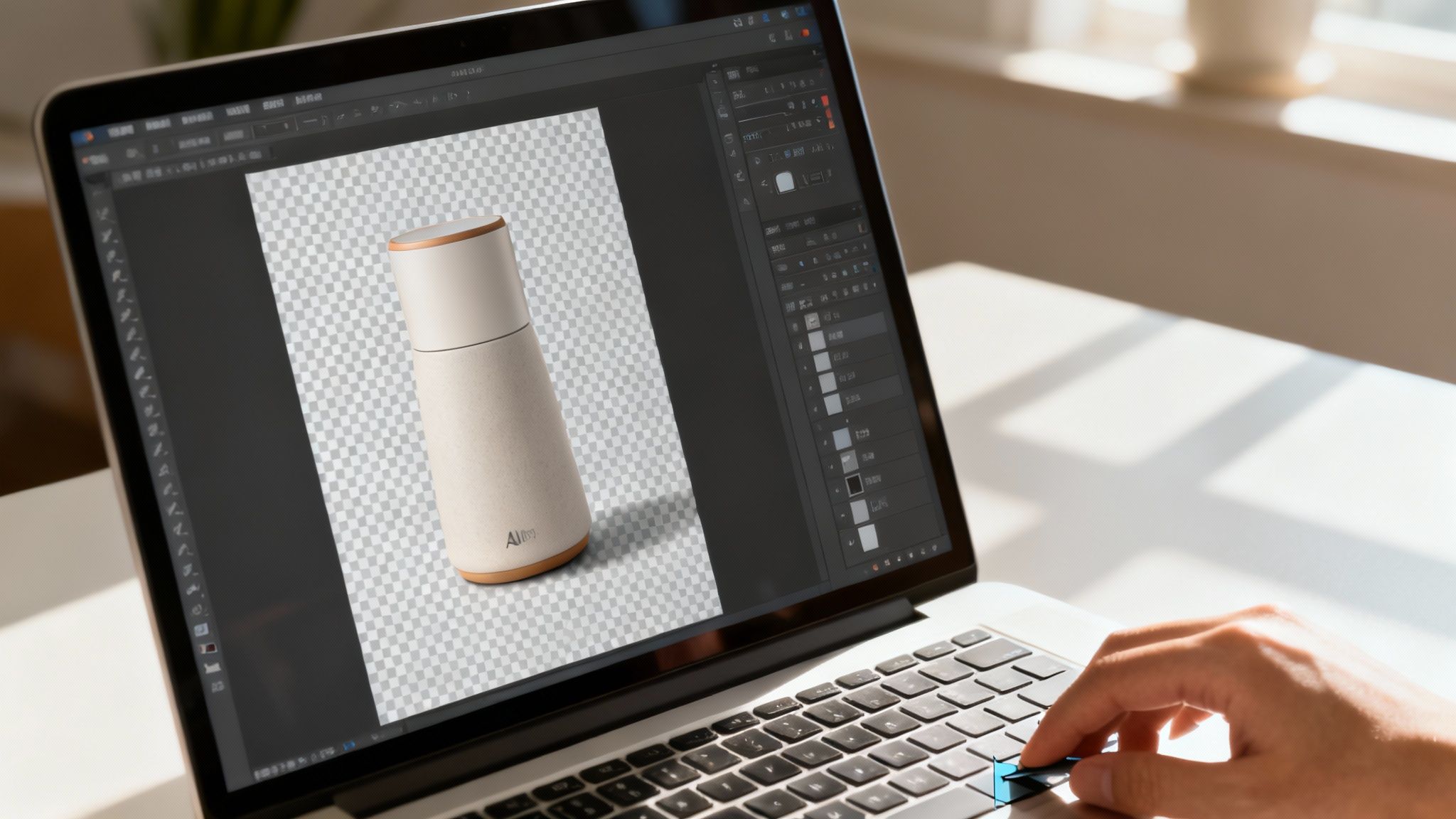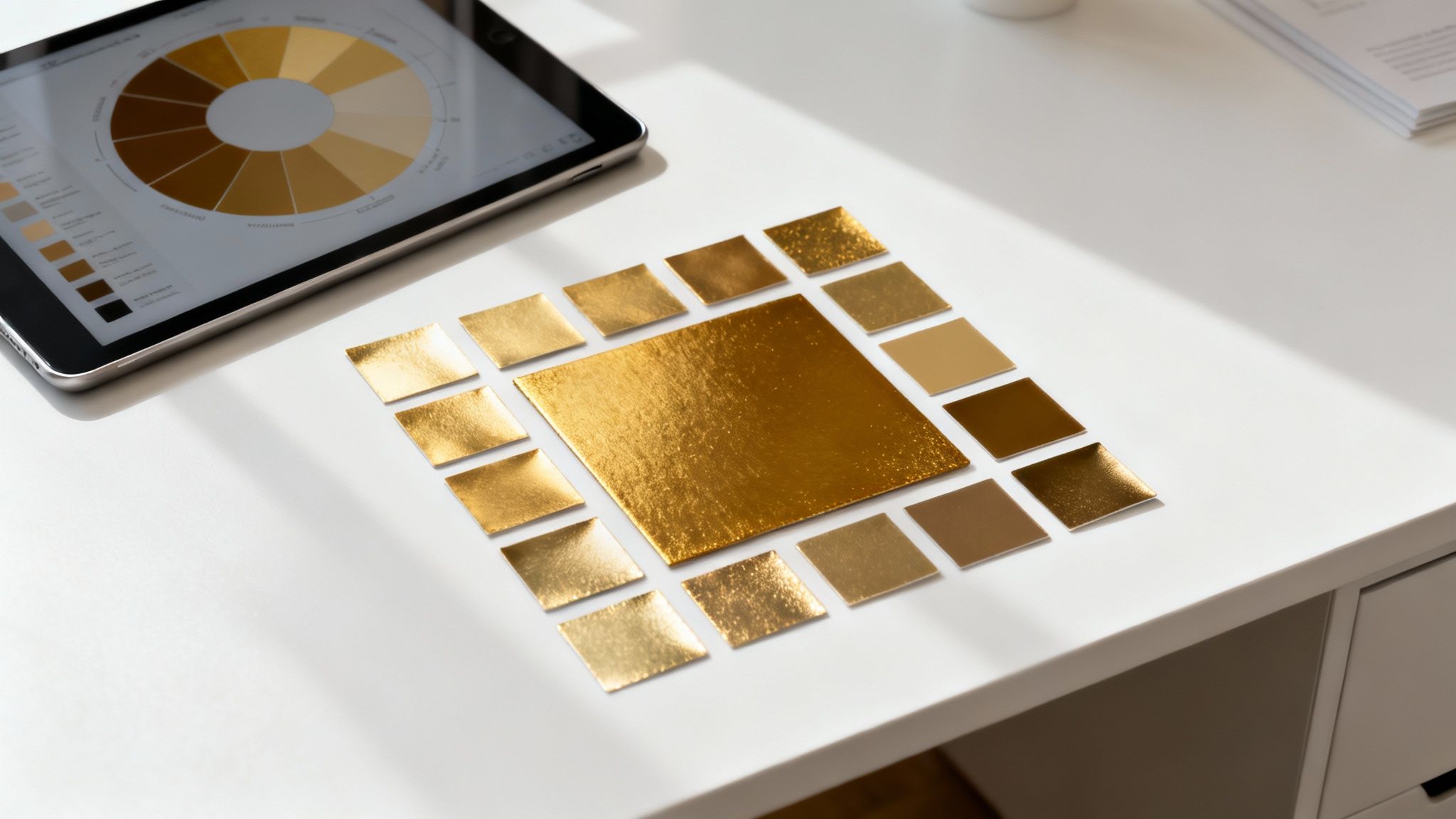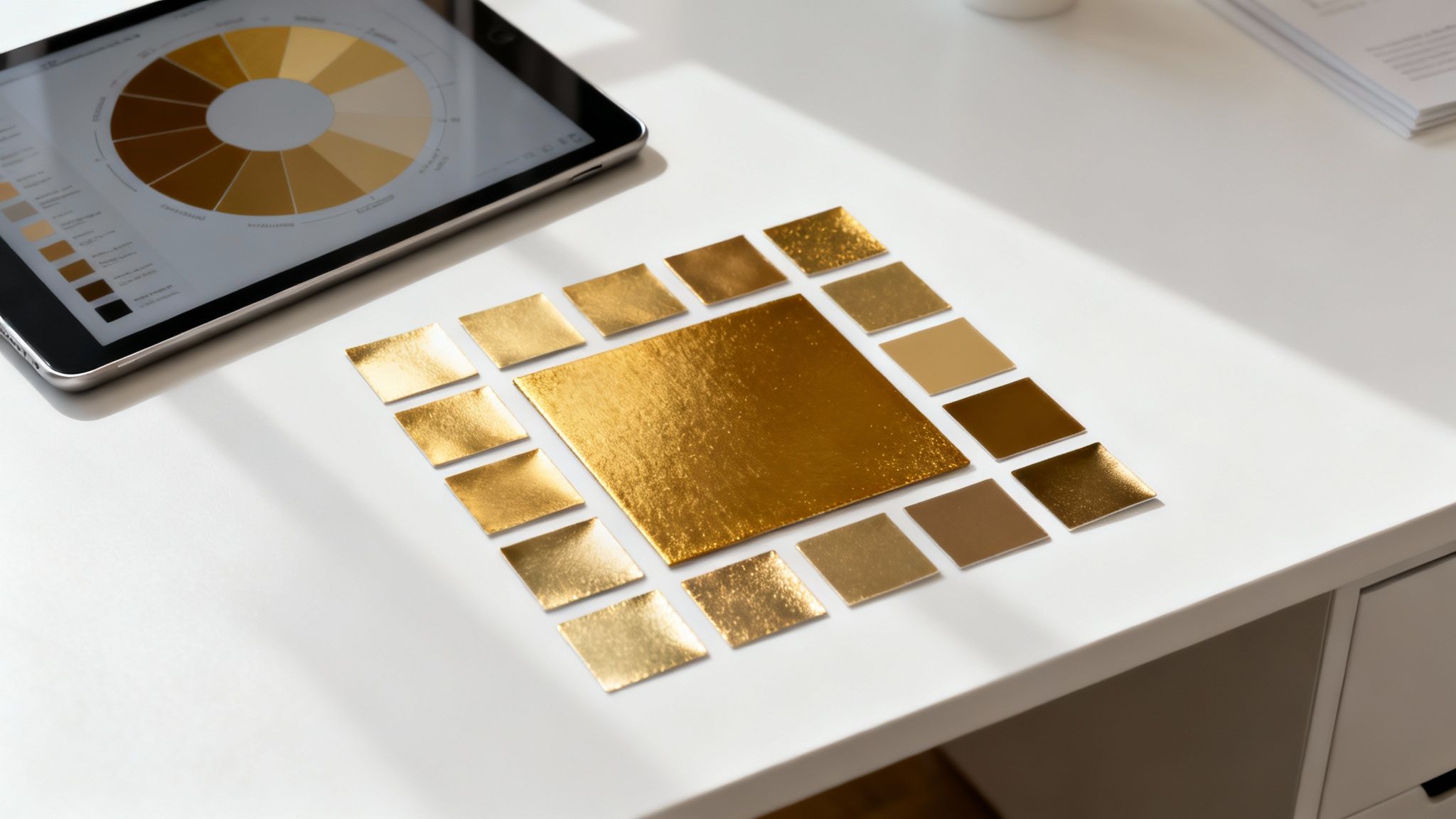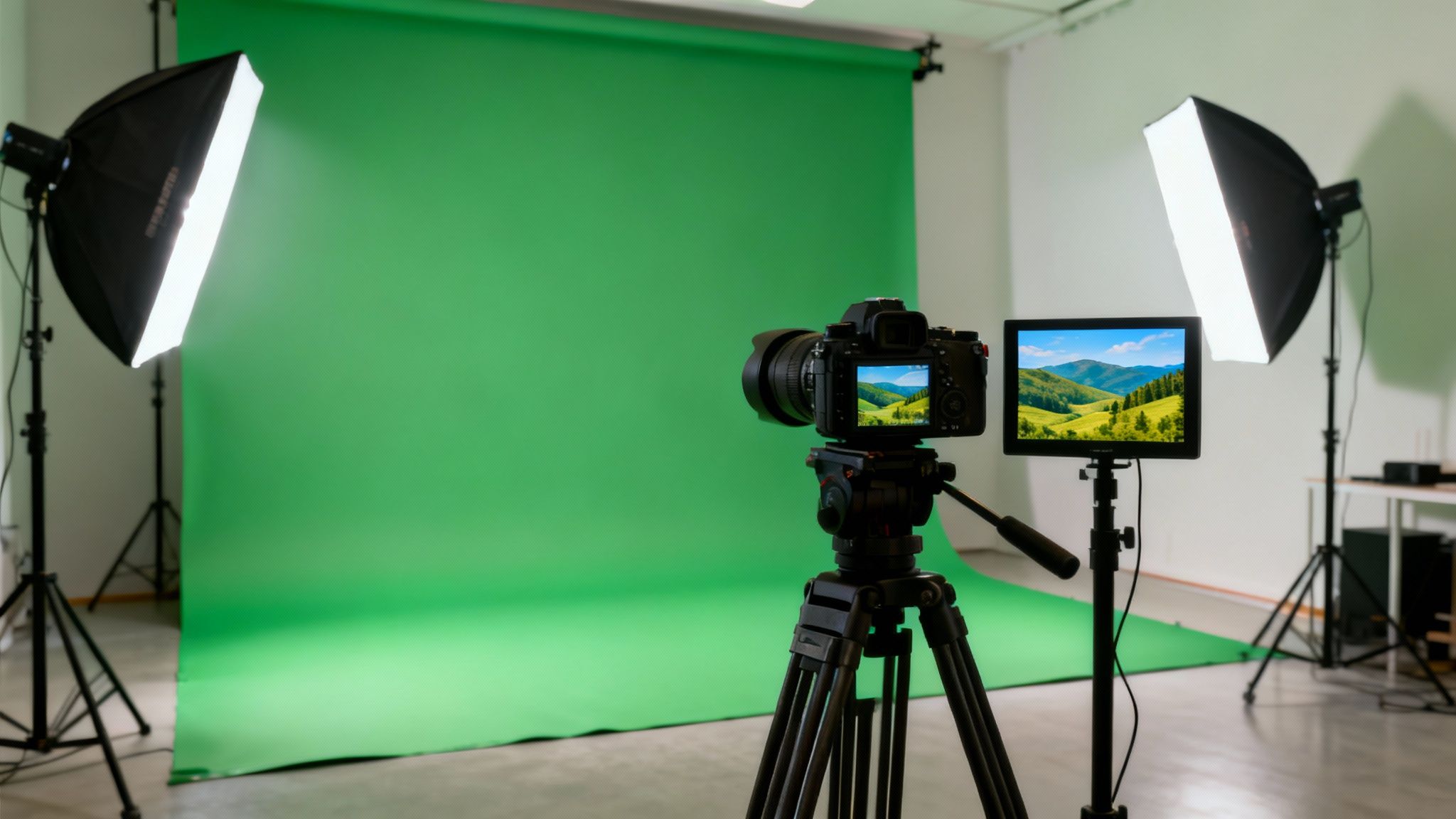For decades, transforming a flat picture into a three-dimensional object was the exclusive domain of complex, expensive software. That has changed. With an AI image to 3d model generator, the entire workflow becomes significantly more accessible and efficient.
Modern AI tools can now analyze a 2D image and construct a three-dimensional asset from it automatically. This represents a major technological shift, opening up 3D creation to a much wider group of creative professionals and enterprise teams.
From 2D Concepts to 3D Realities

The ability to convert a static image into a fully realised 3D asset is no longer just a novel concept; it is a practical tool that is reshaping professional creative workflows. For any industry that relies on visual content and requires rapid iteration, this technology is quickly becoming indispensable.
Streamlining 3D Creation
Traditionally, 3D modelling required years of specialised training and a significant software budget. AI-driven conversion substantially lowers that barrier to entry, enabling a broader range of professionals to create 3D assets.
Now, professionals across different fields can generate foundational models in minutes. Expertise in complex modelling software is no longer a prerequisite for bringing ideas to life, which dramatically accelerates the creative process.
This shift is already having a measurable impact:
- Architecture: Teams can take initial sketches or photographs of buildings and convert them into basic 3D models for rapid visualisations and client presentations.
- Game Development: Independent developers and large studios alike can rapidly prototype characters, props, and environments directly from concept art, reducing valuable production time.
- Product Design: Designers can generate 3D mock-ups from product photos, allowing for faster prototyping and more effective marketing visuals.
The Growing Demand for Secure AI Solutions
As this technology becomes a core part of professional workflows, the need for secure, reliable platforms is becoming critical. For any serious business, using consumer-grade tools introduces unnecessary risks related to data security, intellectual property, and regulatory compliance.
That is where enterprise-ready solutions like Virtuall come in. They provide a controlled, secure environment where creative teams can generate assets while ensuring their work remains confidential and compliant with organisational policies.
The adoption of these advanced tools is not uniform. Some regions are advancing much more quickly than others, highlighting a clear demand for reliable, enterprise-grade AI platforms that can support this growth in a secure manner.
This trend is especially evident in countries that are actively embracing artificial intelligence. Denmark, for example, is a recognised leader in AI adoption across Europe. In 2024, 28% of Danish companies reported using AI technologies.
That figure is the highest in the EU and nearly double the European average of 13.5%, indicating a strong appetite for innovative tools. You can learn more about Denmark's AI leadership on investindk.com. This kind of environment naturally fuels the demand for robust platforms that can handle processes like generating a 3D model from an image securely and responsibly.
How to Prepare Your Image for AI Conversion

The quality of your final AI image to 3D model conversion depends entirely on the source image. The principle is simple: high-quality input yields high-quality output. A few minutes of preparation before uploading can make a significant difference in the final result.
This stage is about providing the AI with the clearest possible information to interpret your object’s shape, depth, and detail. A clean, well-defined image leads directly to a more accurate 3D mesh, saving considerable time in post-production.
Prioritise Clarity Over Extreme Resolution
It is a common misconception that a massive, high-resolution file is inherently better. While a clear image is necessary, extreme resolutions like 8K can sometimes introduce digital noise that confuses the AI. The quality and clarity of the subject are far more important than raw pixel count.
Instead of focusing on resolution, concentrate on these fundamentals:
- Sharp Focus: The subject must be in sharp focus. Any blurriness can be misinterpreted by the AI, leading to distorted or "melted" geometry in the final model.
- Good Lighting: Use a photograph with clear, even lighting that defines the object's form. Soft, distinct shadows are helpful, as they provide the AI with crucial cues about depth and shape.
- High Contrast: Ensure your subject stands out. Strong contrast between the object and its surroundings helps the AI accurately identify its boundaries.
Isolate Your Subject for Better Results
One of the most effective preparation steps is removing distracting backgrounds. A busy background can confuse the AI, causing it to merge elements of the environment into your 3D model. Isolating the subject is key to a clean conversion.
For example, when converting a photograph of a new product for a marketing campaign, a background cluttered with other objects could interfere with the process. By removing the background, you provide the AI with a clear directive on what to model.
A clean input is non-negotiable for a professional output. Every minute spent preparing your image can save ten minutes of tedious mesh clean-up in post-production. It is the single best investment you can make in the entire workflow.
Most modern image editors have simple "remove background" features. Aim for a neutral grey or white background—or, ideally, a transparent one. This leads directly to the next important consideration: file format.
Choose the Right File Format
The file format you use can have a surprisingly significant impact on the outcome. While JPEGs are ubiquitous, they do not support transparency, which is a major drawback for this type of work.
Here is a brief breakdown of the best formats to use:
- PNG: This is typically the top choice. It supports lossless compression (so no quality is lost) and, crucially, allows for transparent backgrounds. It is ideal for isolating your subject cleanly.
- TIFF: Another excellent option for high-quality, lossless images. It is a professional standard, but be prepared for much larger file sizes.
- JPEG: Use this format with caution. It is suitable for quick tests, but its compression can create small artefacts that may degrade your final 3D model's texture quality. If you must use a JPEG, always export it at the highest possible quality setting.
For most professional projects, from product mock-ups to game assets, starting with a transparent PNG provides the cleanest foundation for a successful conversion.
Choosing the Right AI Platform for Your Project
Selecting the right tool to turn an AI image to 3D model is not a one-size-fits-all decision. The best choice depends entirely on your project's objectives. The options range from free, browser-based tools suitable for hobbyists to specialised enterprise platforms designed for professional creative teams.
Making the right choice from the start is critical. A game developer needing a quick, low-poly asset has different requirements than an architectural firm that needs a high-fidelity model for a client presentation. Understanding this distinction is key to an efficient and successful workflow.
What Actually Matters When You Choose?
When comparing platforms, it is important to look beyond marketing claims and focus on the technical specifications that will impact your project. This is where the gap between a consumer-grade tool and an enterprise platform like Virtuall becomes evident.
Here are the critical factors to consider:
- Level of Detail (LoD): How much geometric complexity does your final model require? A simple background prop may be fine with a basic mesh, but a primary character model will demand high-resolution geometry.
- Texture Quality: Does the AI generate clean, high-resolution textures, or will you need to spend hours cleaning them up or recreating them? Professional work often requires textures at 2K or 4K resolution.
- Export Compatibility: This is a crucial consideration. Ensure the platform exports in formats compatible with your existing software pipeline, such as .obj, .fbx, or .gltf. An incompatibility here can bring a project to a halt.
It is also worth noting that some AI models are trained specifically on organic shapes—like characters and creatures—while others excel at creating hard-surface objects like furniture or machinery. Selecting a platform aligned with your subject matter will yield better results. For a closer look, check out our guide on the different types of AI tools for 3D modelling.
A Look at Different AI Tool Types
To help you decide, let's break down the main categories of tools available. Each has its place, but they serve very different needs, especially regarding security, customisation, and output quality.
Comparison of AI 2D-to-3D Conversion Tool Types
Choosing the right tool is not just about the first model you generate. It is about how that tool integrates into your entire creative and business process, from security protocols to final export compatibility.
For Businesses, Security and IP Aren’t Optional
For any commercial project, the conversation must extend beyond technical specifications to address security and compliance. When you upload a concept image to a free online converter, where is that data being stored? Who legally owns the 3D model it generates? These are critical questions that many consumer-grade tools do not adequately answer.
For a business, data security and intellectual property (IP) protection are not optional extras; they are foundational requirements. Using an unvetted tool can expose sensitive project files and create serious IP ownership ambiguities.
This is precisely why professional studios and brands choose enterprise-grade platforms. They provide a secure, closed-loop environment where creative assets are protected. These platforms guarantee that your work remains confidential and that you retain full ownership of every model you generate.
The sharp rise in AI adoption among businesses reflects this need for security and reliability. Take Denmark, for instance, where AI use in firms increased from 6.62% in 2017 to 35.92% in 2021. This growth is heavily concentrated in sectors like computer programming and consultancy, where protecting IP is paramount. For teams looking to build out their AI capabilities without deep coding knowledge, platforms offering Nocode Backend AI solutions are becoming a popular way to maintain control while accelerating development.
Getting it Done: Converting and Refining Your 3D Model
With your prepared image ready, the next step is the AI conversion process. This is where your 2D input is interpreted into a three-dimensional form. This process is not passive; you can guide the AI with key instructions to achieve the best possible result.
The initial step is straightforward: upload your image to your chosen platform, such as Virtuall. Once uploaded, you will be presented with several settings that will define your new 3D asset. These are not merely technical sliders—they are creative choices that directly shape the model's final look, feel, and performance.
Dialing in the Key Conversion Settings
Two of the most critical settings to adjust are mesh density and texture resolution. Configuring these correctly is fundamental to creating a model that meets your project's specific needs.
Mesh Density: This refers to the number of polygons in your model. A higher density creates a more detailed, smooth surface, but results in a larger file size that is more demanding on hardware. A lower density produces a "low-poly" model, which is better for real-time performance in games or AR applications.
Texture Resolution: This determines the quality of the image mapped onto your 3D mesh. High resolutions like 2K or 4K capture fine details but increase the file size. Lower resolutions are more efficient but can appear blurry up close.
The right choice depends on the model's intended use. For a product visualisation in a marketing render, a high-density mesh and a crisp 4K texture are ideal for showcasing detail. Conversely, for an asset in a mobile augmented reality (AR) app, a low-poly model with a 1K texture is necessary to ensure smooth, real-time performance.
This infographic outlines how to select the right tool for your project, from exploratory use to enterprise-level production.

There is a clear progression. As project requirements become more professional, the need for secure, robust platforms built for serious production becomes paramount.
The Post-Processing Stage: Where the Real Work Begins
Once the AI has completed its process, you will have a raw 3D model. It is important to understand that this is a starting point, not the finished product. No AI-generated model is perfect out of the box. The next phase—refinement and post-processing—is where you transform the asset from a rough draft into a polished, professional piece ready for any production pipeline.
This almost always involves importing the generated model into dedicated 3D software like Blender or Maya. This is your opportunity to correct common issues, such as stray vertices, irregular geometry, or other artefacts the AI may have introduced.
Think of the initial AI output as a block of marble. It has the basic shape of your sculpture, but it's the artist's skilled hand that chisels away the imperfections and brings out the fine details. Post-processing is your digital chisel.
Cleaning Up Topology and Boosting Textures
One of the first tasks is to clean up the model's topology—the flow and structure of its polygons. Clean topology is essential for proper animation, deformation, and lighting. You will likely use retopology tools to build a more efficient mesh that retains the original shape but with an optimised polygon layout.
Next, you will want to refine the textures. The AI provides a base texture map, but it can be significantly improved. This could involve sharpening details, adjusting colours, or painting in surface imperfections like scratches and scuffs to add realism and character.
For those looking to add intricate surface detail, learning how to make a normal map is a valuable skill. This technique allows you to simulate high-resolution detail on a low-poly model, achieving a professional look without sacrificing performance. By carefully refining both the mesh and its textures, you can elevate the AI's rough output into a high-quality, production-ready asset.
Putting Your New 3D Model to Work in Professional Projects
Creating a 3D model with AI is one part of the process; integrating it into a real-world project is where its value is truly realised. The ultimate goal of using an ai image to 3d model workflow is to deploy that asset in a game engine, a product prototype, or an immersive experience.
This is the step where your new model transitions from being a standalone file to a functional component of a larger creative vision. The key is knowing how to prepare and optimise it for its final destination.
From Model to Real-World Application
Every professional workflow has its own technical requirements. A model designed for a high-end architectural visualisation has completely different needs than one for a mobile AR application. Success depends on preparing your model for the specific platform where it will be used.
Here are a few common application scenarios:
- Architectural Visualisation: You can import your model into engines like Unreal Engine or Unity to build realistic walkthroughs. For this, you will want to use high-quality textures and detailed geometry to achieve photorealism.
- Product Prototyping: For industrial design, your model can be brought into CAD software to evaluate its form and function. This usually involves converting the mesh into a solid body and ensuring the scale is precise.
- Augmented Reality (AR): When developing an AR experience for mobile devices, performance is the top priority. Your model must be lightweight and highly optimised with a low polygon count to ensure a smooth and interactive user experience.
To fully leverage your AI-generated models, view them as integral parts of a tangible project. For inspiration on physical applications, this practical guide to 3D printed home decor offers some excellent ideas.
Optimising for Peak Performance
Regardless of your model's final destination, optimisation is mandatory. A heavy, unoptimised model will severely impact performance, causing slow renders, low frame rates, or application crashes.
The two main areas to focus on are polygon count and texture maps.
For real-time applications like games or AR, it is crucial to reduce the polygon count as much as possible while preserving the model’s core shape. Similarly, reduce your texture maps to the smallest size that maintains visual quality (e.g., 1024x1024 instead of 4096x4096).
A strong understanding of 3D model file formats is also essential. Choosing the right format can make a significant difference in performance and compatibility.
A well-optimised asset is invisible to the user—it just works. A poorly optimised one is a bottleneck that can derail an entire project. Taking the time to do this right is an investment in your final product.
Scaling from a Single Experiment to an Enterprise Pipeline
Transitioning from one-off AI experiments to a full-scale, integrated content pipeline is a significant step. It requires establishing clear standards for how your team creates, refines, and integrates these assets. The goal is to build a predictable system that delivers consistent, high-quality results.
However, scaling this technology within a business presents challenges. A 2024 survey—the largest of its kind in the Nordics—found that while many Danish companies are experimenting with generative AI, most lack a formal strategy for scaling it. This highlights a common issue: moving from pilot projects to widespread adoption requires strong leadership and a solid strategic plan.
You can explore the details in the full report on AI in Denmark. By implementing standardised processes and using appropriate platforms, creative teams can transform this powerful technology into a sustainable competitive advantage.
A Few Common Questions About Image-to-3D Conversion
As the process of turning an AI image to 3D model becomes more accessible, several common questions arise. This is normal, as creators seek to understand the technology's true capabilities, its limitations, and how it fits into a professional creative pipeline.
Answering these questions helps set realistic expectations. Most inquiries revolve around quality, intellectual property ownership, and the types of images that yield the best results.
So, Can Any Image Be Turned into a 3D Model?
Technically, you can input almost any image into a conversion tool, but the results can vary dramatically. The AI is not magic; it requires clear data to interpret depth, shape, and form.
Images that provide the best chance for a successful model typically have:
- Good, clear lighting: Soft shadows help the AI understand the object’s true shape.
- High contrast: The subject should be clearly distinguishable from its background.
- A clean, unobstructed view: If part of the object is obscured, the AI must guess the missing geometry.
Attempting to convert a cluttered scene or a poorly lit photograph will almost always result in a distorted, unusable model due to insufficient information.
It is important to remember that the AI is essentially inferring what it cannot see. A single photo of a chair means the AI has to generate the back of it, and this is often where inaccuracies occur.
Who Owns the IP on an AI-Generated Model?
This is a critical question, especially for commercial projects. The answer depends on the tool you use. Many free, consumer-focused platforms have ambiguous terms of service that could put your ownership rights at risk.
For any serious business application, the only prudent choice is a secure, professional-grade platform. These services are designed for creative teams and explicitly state in their terms: you retain 100% of the IP ownership. This applies to your original images and the 3D models you generate from them, ensuring your creative assets remain your property.
Ready to unify your creative workflow? Virtuall provides a secure, all-in-one workspace for generating, managing, and collaborating on 3D models, images, and video. Move from concept to final asset faster than ever before at https://virtuall.pro.











